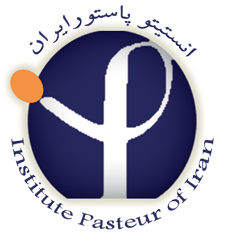Volume 28 - Supplementary
IBJ 2024, 28 - Supplementary: 407-407 |
Back to browse issues page
Download citation:
BibTeX | RIS | EndNote | Medlars | ProCite | Reference Manager | RefWorks
Send citation to:



BibTeX | RIS | EndNote | Medlars | ProCite | Reference Manager | RefWorks
Send citation to:
Sadeghi A, Mohammadi H, Mahmoudi Manesh M, Moradian A. Relationship Between Health Literacy and Self-Medication Among Students in Esfarayen City in 2023. IBJ 2024; 28 :407-407
URL: http://ibj.pasteur.ac.ir/article-1-4844-en.html
URL: http://ibj.pasteur.ac.ir/article-1-4844-en.html
Abstract:
Introduction: Self-medication is a significant global issue. Given the adverse consequences and side effects associated with self-medication, it is essential to examine the role of health literacy as a key factor in mitigating the excessive use of medicines. Therefore, this study aimed to explore the relationship between health literacy and self-medication among students in Esfarayen City, North Khorasan Province, Iran, in 2023.
Methods and Materials: In this descriptive-analytical study, 366 students from Esfarayen were selected and evaluated using a random sampling method. The data were collected using the standard health literacy questionnaire for Iranian adults, and the researcher made a questionnaire on self-medication and entered it into SPSS software. Finally, they data were analyzed using appropriate statistical tests such as Mann-Whitney, independent-t, and Pearson's correlation coefficient.
Results: The data analysis revealed that the most common sources of information regarding the proper use of medication among students were doctors (48.9%), as well as the Internet and social media (22.1%). The most inhibiting factor in self-medication was the fear of complications (57.9%), and the most motivating factor in self-medication was the sound and safe experience of self-medication in the past (61.7%). The most commonly used medicines were acetaminophen (77.6%) and cold pills (75.1%). Most diseases in which self-medication was carried out were cold (78.8%) and headache (63.1%). The statistical test results showed a significant relationship between health literacy and the knowledge score in the field of self-medication (p = 0.001; R = 0.18) and between health literacy and the attitude score (p = 0.001; R = 0.29). However, there was no significant relationship between health literacy and performance score (p = 0.51; R = -0.034). There was a significant difference in the average score of health literacy (p = 0.01), knowledge score (p = 0.001), and attitude score (p = 0.001) in the two groups of medical and non-medical science students.
Conclusion and Discussion: Considering the relationship between health literacy and the knowledge and attitude scores regarding self-medication, it is recommended to enhance the health literacy of students, who represent the young and future generation of society. This goal can be achieved by conducting educational classes focused on the complications and consequences of self-medication. Additionally, we should strive to improve their attitudes and knowledge by monitoring the content available on the Internet and social media, which are among the most significant sources of information. By taking these steps, we can work towards reducing the complications associated with the excessive use of medication, as well as the financial burden on society.

Methods and Materials: In this descriptive-analytical study, 366 students from Esfarayen were selected and evaluated using a random sampling method. The data were collected using the standard health literacy questionnaire for Iranian adults, and the researcher made a questionnaire on self-medication and entered it into SPSS software. Finally, they data were analyzed using appropriate statistical tests such as Mann-Whitney, independent-t, and Pearson's correlation coefficient.
Results: The data analysis revealed that the most common sources of information regarding the proper use of medication among students were doctors (48.9%), as well as the Internet and social media (22.1%). The most inhibiting factor in self-medication was the fear of complications (57.9%), and the most motivating factor in self-medication was the sound and safe experience of self-medication in the past (61.7%). The most commonly used medicines were acetaminophen (77.6%) and cold pills (75.1%). Most diseases in which self-medication was carried out were cold (78.8%) and headache (63.1%). The statistical test results showed a significant relationship between health literacy and the knowledge score in the field of self-medication (p = 0.001; R = 0.18) and between health literacy and the attitude score (p = 0.001; R = 0.29). However, there was no significant relationship between health literacy and performance score (p = 0.51; R = -0.034). There was a significant difference in the average score of health literacy (p = 0.01), knowledge score (p = 0.001), and attitude score (p = 0.001) in the two groups of medical and non-medical science students.
Conclusion and Discussion: Considering the relationship between health literacy and the knowledge and attitude scores regarding self-medication, it is recommended to enhance the health literacy of students, who represent the young and future generation of society. This goal can be achieved by conducting educational classes focused on the complications and consequences of self-medication. Additionally, we should strive to improve their attitudes and knowledge by monitoring the content available on the Internet and social media, which are among the most significant sources of information. By taking these steps, we can work towards reducing the complications associated with the excessive use of medication, as well as the financial burden on society.

| Rights and permissions | |
 |
This work is licensed under a Creative Commons Attribution-NonCommercial 4.0 International License. |







.png)
